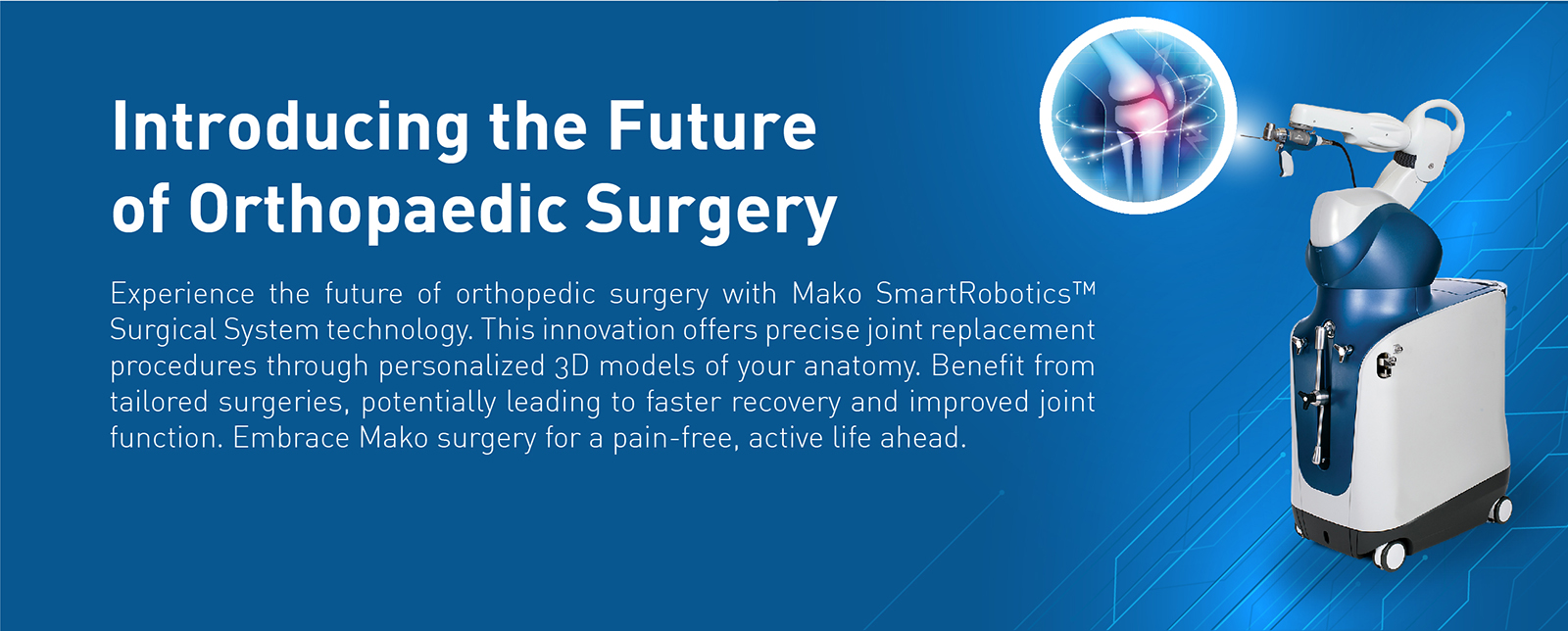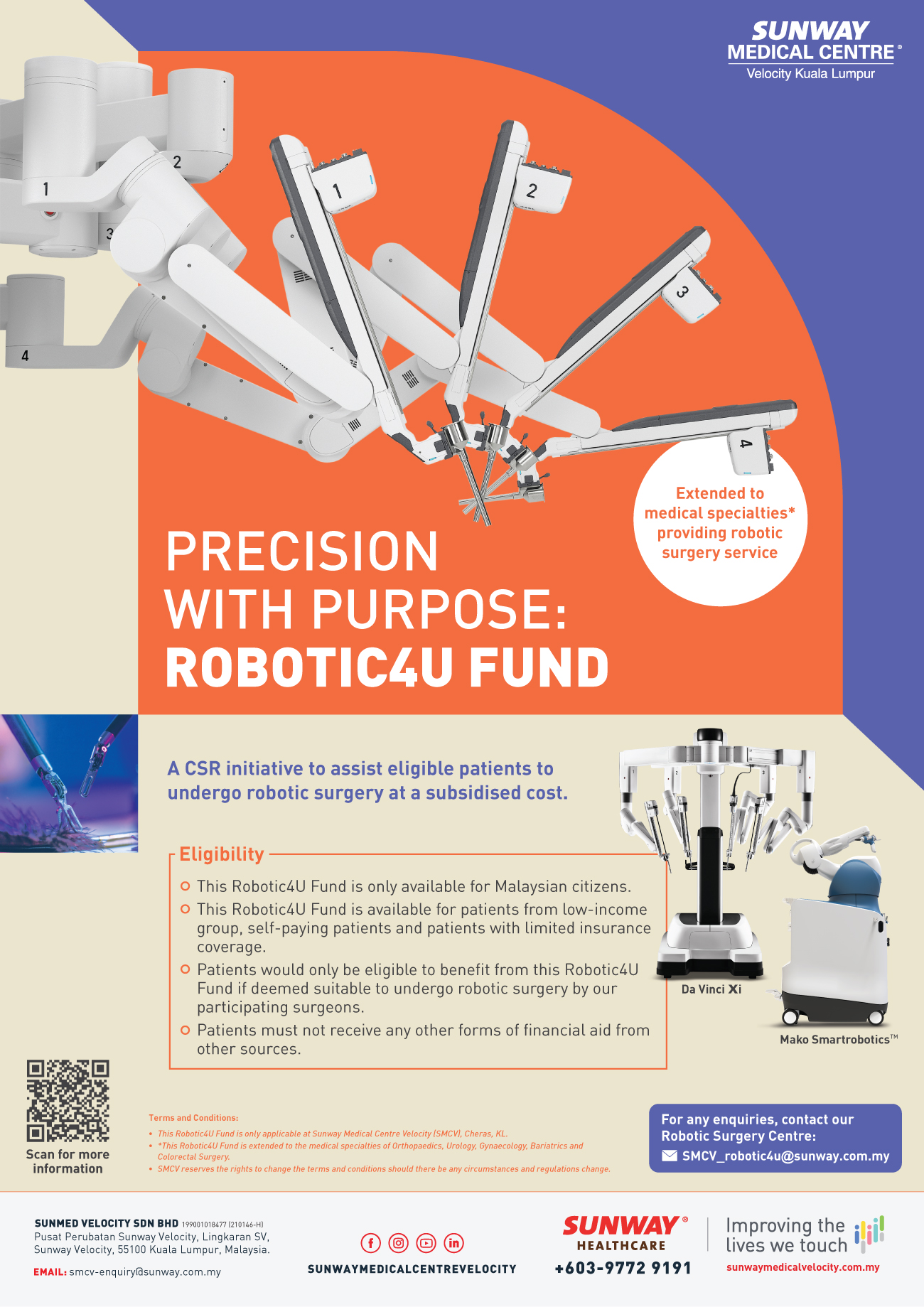
Benefits of Mako SmartRobotics Surgical System

Precision and Customisation
Mako SmartRobotics™ Surgical System uses 3D imaging (CT scan) to create a customised patient-specific surgical plan.

Less Invasive Surgery
Mako SmartRobotics™ Surgical System assisted procedures require smaller incisions compared to traditional surgery.

Lesser Pain and Faster Healing
Less invasive approach with smaller incisions and precise bone cuts, combined with Mako SmartRobotics™ Surgical System, results in reduced pain, faster recovery, and increased patient satisfaction.

Lower Risk of Implant Failure
Accurate implant positioning reduces friction, wear, lower risk of complicatons and need for future revision surgery.
How the Mako SmartRobotics Surgical System Works
An innovative robotic platform utilised in orthopaedic surgeries, particularly for procedures like knee and hip replacements.
Types of Surgery

Total Hip Replacements
Surgery to replace damaged hip joint with an artificial one, easing pain and improving mobility.

Total Knee Replacements
Surgery to replace damaged knee joint with an artificial one, relieving pain and restoring mobility.

Partial Knee Replacements
Surgery to replace only the damaged part of the knee joint, preserving healthy tissue and providing pain relief.
FAQ
For both knee and hip replacements, the surgeon uses the MAKO planning system and 3D scans to create a personalized surgical plan. The robotic system helps the surgeon execute this plan with high accuracy, while the surgeon’s experience and judgement ensure proper alignment, balance, and overall outcomes.
This combination of advanced technology and surgical expertise leads to improved precision and greater patient satisfaction.











